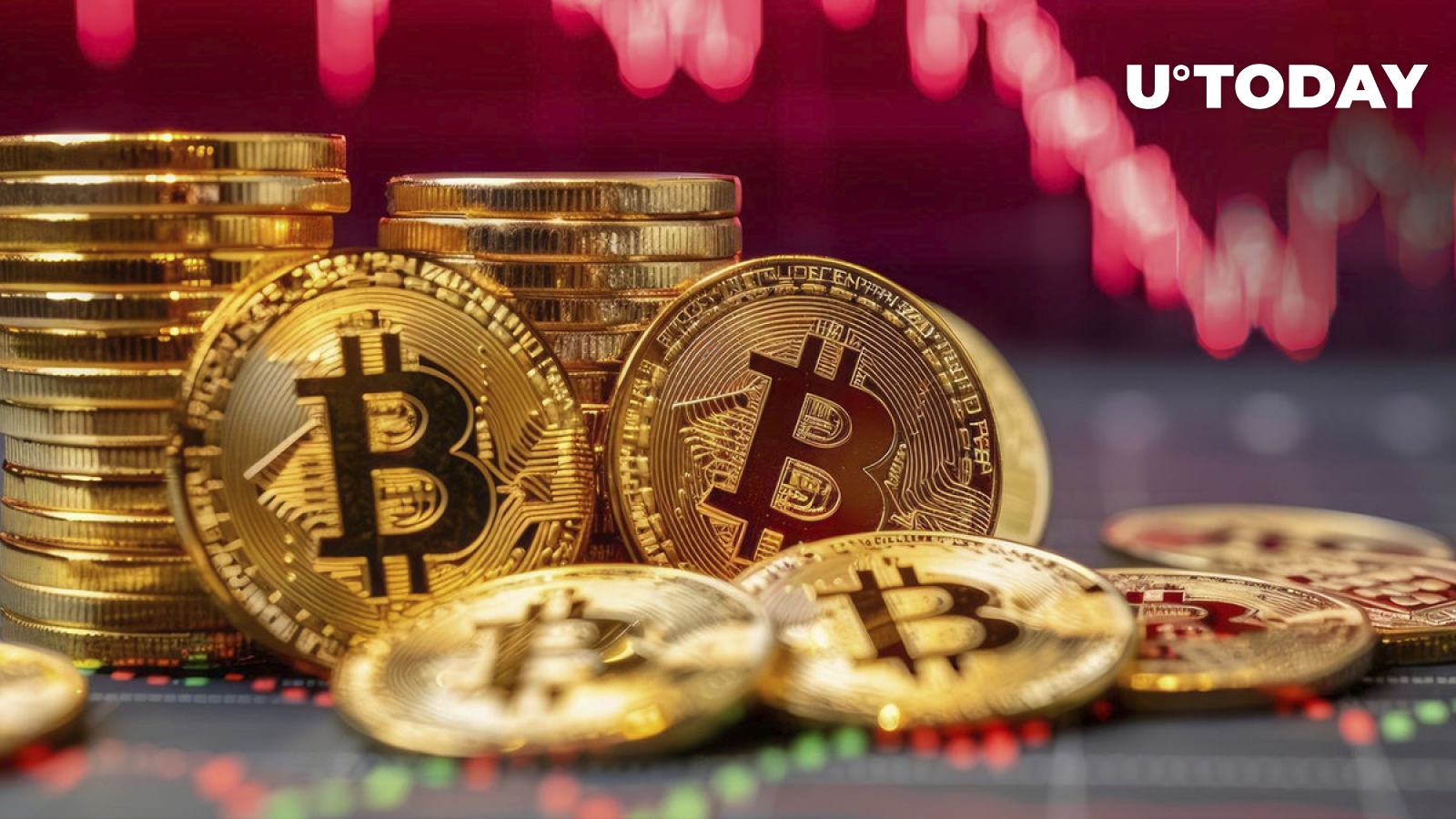
Disclaimer: The opinions expressed by our writers are their own and do not represent the views of U.Today. The financial and market information provided on U.Today is intended for informational purposes only. U.Today is not liable for any financial losses incurred while trading cryptocurrencies. Conduct your own research by contacting financial experts before making any investment decisions. We believe that all content is accurate as of the date of publication, but certain offers mentioned may no longer be available.
The entire cryptocurrency market saw selling pressure as Bitcoin’s price fell to its lowest point in over a week. Bitcoin, the first and largest cryptocurrency by market cap, extended its declines from highs of $65,287 on April 25 into the second day, reaching intraday lows of $62,389.
The Bitcoin sell-off spurred a wave of selling in the crypto market, exacerbating the downward pressure on alternative cryptocurrencies known as “altcoins.”
At the time of writing, BTC had dropped 2.28% in the previous 24 hours to $62,839. Several cryptocurrencies were also trading in red, with losses ranging from 2% to 15%. Solana (SOL) and Shiba Inu fell about 6% in the last 24 hours, while Solana meme coins Dogwifhat and Bonk suffered worse losses, falling 11.80% and 13.45%, respectively.
The price downturn caught some investors off guard, leading to a cascade of liquidations across various cryptocurrency exchanges.
According to CoinGlass data, over $157.29 million worth of crypto assets were liquidated within the last 24 hours, with Bitcoin accounting for $42.22 million of that total.
The downturn in the cryptocurrency market coincided with the release of higher-than-expected inflation data, raising investor concerns about the global economy’s outlook.
According to CNBC, the core personal consumption expenditures (PCE) price index, excluding food and energy, grew 2.8% year on year in March, matching February and slightly exceeding expectations.
The Fed targets 2% inflation, which the core PCE has exceeded for the past three years. The Fed focuses on the PCE in particular because it compensates for changes in consumer behavior.
The report comes on the heels of bad inflation news from Thursday, and the Fed might probably keep interest rates unchanged until at least the summer, unless the data changes significantly.
With inflation still rising two years after it peaked at the highest level in more than 40 years, central bank policymakers are closely monitoring the data as they consider the next steps in monetary policy.
Read More: u.today









 Bitcoin
Bitcoin  Ethereum
Ethereum  Tether
Tether  XRP
XRP  Solana
Solana  USDC
USDC  Dogecoin
Dogecoin  TRON
TRON  Lido Staked Ether
Lido Staked Ether  Cardano
Cardano  Hyperliquid
Hyperliquid  Wrapped Bitcoin
Wrapped Bitcoin  Wrapped stETH
Wrapped stETH  Sui
Sui  Bitcoin Cash
Bitcoin Cash  Chainlink
Chainlink  LEO Token
LEO Token  Avalanche
Avalanche  Stellar
Stellar  Toncoin
Toncoin  Shiba Inu
Shiba Inu  USDS
USDS  WETH
WETH  Wrapped eETH
Wrapped eETH  Hedera
Hedera  Litecoin
Litecoin  Binance Bridged USDT (BNB Smart Chain)
Binance Bridged USDT (BNB Smart Chain)  Ethena USDe
Ethena USDe  Polkadot
Polkadot  Monero
Monero  WhiteBIT Coin
WhiteBIT Coin  Bitget Token
Bitget Token  Coinbase Wrapped BTC
Coinbase Wrapped BTC  Pepe
Pepe  Pi Network
Pi Network  Uniswap
Uniswap  Aave
Aave  Dai
Dai  Ethena Staked USDe
Ethena Staked USDe  Bittensor
Bittensor  OKB
OKB  Internet Computer
Internet Computer  Aptos
Aptos  BlackRock USD Institutional Digital Liquidity Fund
BlackRock USD Institutional Digital Liquidity Fund  NEAR Protocol
NEAR Protocol  Cronos
Cronos  Jito Staked SOL
Jito Staked SOL  Tokenize Xchange
Tokenize Xchange  Ethereum Classic
Ethereum Classic